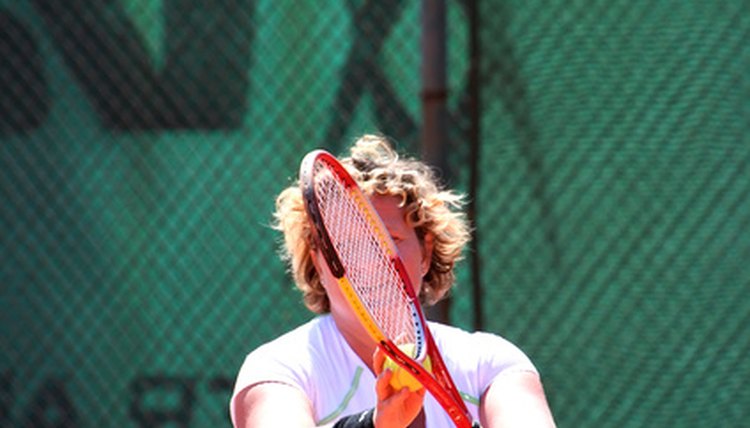Rules of Tennis Doubles Tiebreakers

Depending on what league governs your tennis match, you might play one of several common tie-breaks. Some leagues expedite play by playing tie-breaks at different times during a set or match, while others use abbreviated tie-breaks. Learning which tiebreaker you must play and when you should play it will help you avoid a technicality that can cost you a match.
Standard Tie-Break
The official tie-break sanctioned by the International Tennis Federation and used by most national, professional and collegiate governing bodies is the 12-point tie-break, often referred to as a 7-point tie-break because the winner must win seven points. The tie-break is played when a set reaches six games all, with the next person in the serving rotation starting the tie-break. That player serves one point from the deuce court, then subsequent players serve two points, starting each rotation of two points from the ad court. When a team wins at least seven points and has a two-point lead, that team wins the tie-break. Theoretically, a tie-break can go on forever if no one gets a two-point lead. Teams change ends of the court every six points, even though this will mean that at times, players will serve on a different end of the court during the tie-break than they did during the set.
Coman Tie-Break
A recent variation of the official tie-break, called a Coman tie-break after the umpire who created it, was introduced to allow players to serve on the same side of the court during a tie-break as they did during the set. During this tie-break, players switch ends of the court after the first point, then switch sides every four points from then on.
Nine-Point Tie-Break
The 9-point tie break ensures a tie-break will not go on very long because the winner does not need to win by two. The first player to win five wins the tie-break. The first player serves two points, the second player serves two, the next player serves two and the final player serves three points, if necessary. If the score gets to four points all, the receiving team picks which of its players will receive the final point. Players change sides after four points.
Match Tie-Break
Some tournaments and leagues, including some sanctioned by the U.S. Tennis Association, use a Super Tie-Break in lieu of a third set. The rotation is the same as a 12-point tie-break, but the winner must win 10 points and by a margin of two points.
TeamTennis Super Tiebreaker
If you play in a TeamTennis league, you might end a dual match with a Super Tiebreaker. This tie-break allows the receiving team to choose on which end of the court it wants to start playing and lets players change side of the court -- deuce or ad -- to play the tie-break. The serving team chooses who it wants to serve first. The winner is the first team to seven points, and this team does not need to win by two. Players serve two points each, starting from the deuce court, and switch ends of the court every six points. If the score reaches 6 points all, the receiving team chooses on which side it will receive the final point. Players must serve gender to gender.
When to Play a Tie-Break
Some leagues and tournaments play abbreviated sets, called Pro Sets, with a tie-break played to end the set. Common Pro Sets are played to eight or 10 games, with a tie-break played either at eight or 10 all, or at seven or nine all. Some leagues play best-of-three sets, but require players to play a tie-break at five games all.
After the Tie-Break
After a tie-break the set is scored as 7-6 and the tie-break is considered a game. This means that the teams switch ends of the court at the end of the tie-break, just as if an odd number of games had been played during a regular set. The team that received first during the tie-break begins serving the following set. Either team member may serve the first game, since it is the start of a new set.
References
Writer Bio
Sam Ashe-Edmunds has been writing and lecturing for decades. He has worked in the corporate and nonprofit arenas as a C-Suite executive, serving on several nonprofit boards. He is an internationally traveled sport science writer and lecturer. He has been published in print publications such as Entrepreneur, Tennis, SI for Kids, Chicago Tribune, Sacramento Bee, and on websites such Smart-Healthy-Living.net, SmartyCents and Youthletic. Edmunds has a bachelor's degree in journalism.
